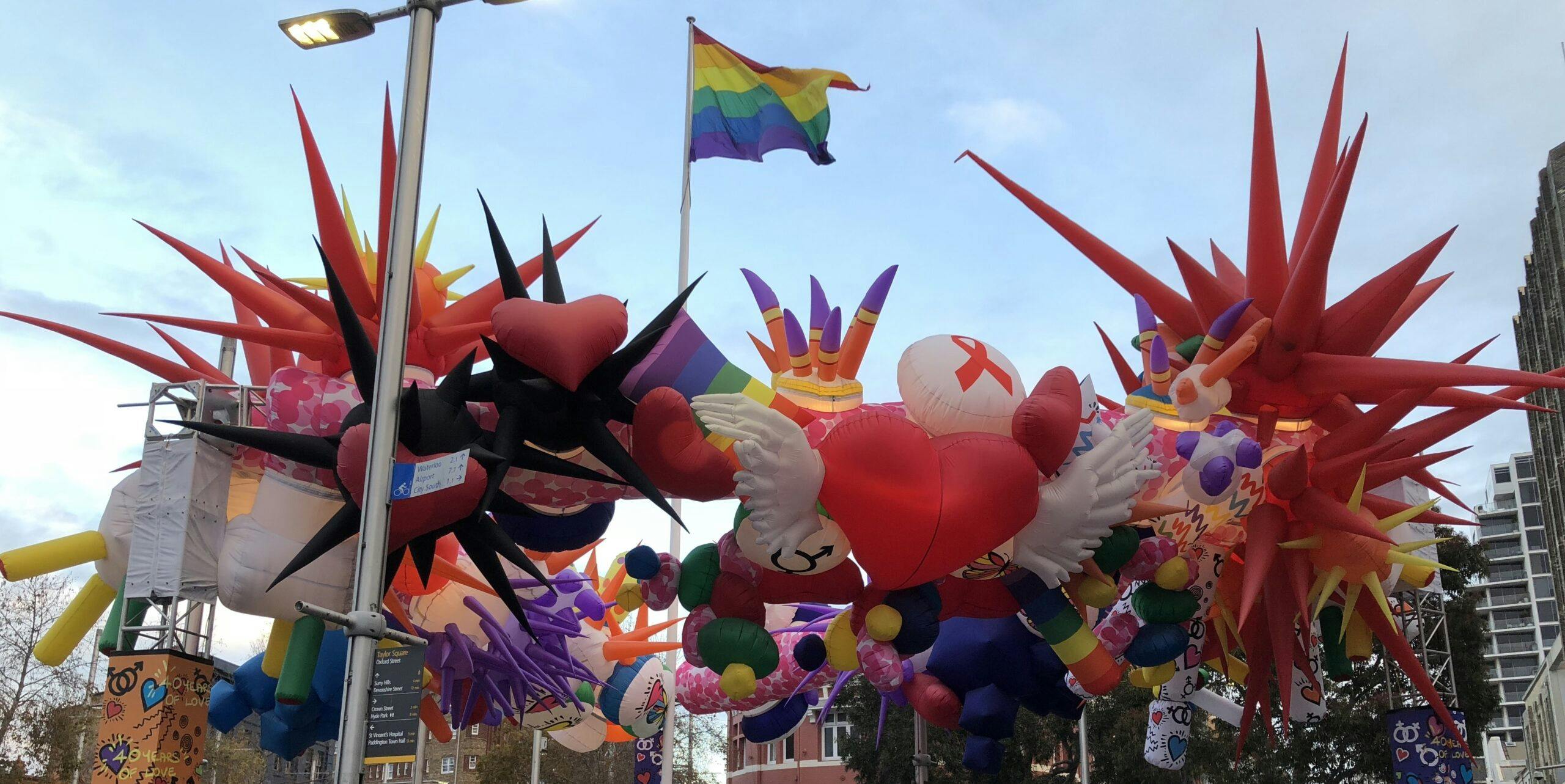
Best Appliances in Australia for 2025
Choosing appliances for your home is about so much more than ticking a box for function. It’s about selecting products that suit your lifestyle, offer long lasting reliability, and bring refined[...]

Walking through Surry Hills is an experience in itself. It is a hub of colour and culture; the sights and sounds are so different to that of anywhere else in Sydney. It is home to Australia’s first paint and sip studio, Cork and Canvas. The number of cocktail bars and clubs are endless. It has a personality for itself, and it is a personality that invites anyone and everyone in, always.
As if the suburb couldn’t get anymore flamboyant, in the centre of the suburb is a spectacle. Below a rainbow flag flying proudly with the wind sits an enormous array of spikes, hearts, stripes and gender symbols. A monument that people can’t help but stare at as they stroll past; something that makes cyclists slow down slightly as they stare, before speeding up again on their way home.
Taylor Square has been transformed by an inflatable art installation entitled ‘40 Years of Love’ in commemoration of the 40th anniversary of Mardi Gras. The installation was opened on June 24th, the date of the very first Mardi Gras.
The creation has been designed to memorialise Australia’s favourite celebration of love, Mardi Gras, which falls in February every year, and has been recognised since 1978. But the event was not always a celebration. The first Mardi Gras turning into a violent, bloody protest. The day now celebrates love in all its forms, and is what artist and designer of ‘40 Years of Love’, Matthew Aberline, calls a “fabulous protest”.
“The happy thing for us is that we get to tell that story, and we get to tell that in a way that is really, really fun and outrageous and it gets to be shared, viewed and enjoyed by this whole new generation of people,” said Aberline.
The event is now widely anticipated by Australians, and sees millions of attendees every year. The organisers even had the sense to shift the day of the event from the middle of winter to “hot pants weather” – a move that was clearly pleasing to participants across the board.
Matthew worked with fellow artist and architect Maurice Goldberg to create the phenomenon, which aims to concretize a celebration of love and glamour. Standing at 9 metres high, the inflatable masterpiece is packed full of significant symbols representing sexual freedom, gender diversity, and more sinister topics like HIV Aids and the violence gay men and women faced in earlier times. The pink triangle that artwork is centred around, for example, is a nod to World War 2, where homosexuals were forced to wear the symbol on their sleeves as a sign of recognition for the Nazis. Aberline and Goldberg have succeeded in turning some of the most oppressive, ugly symbols into something groundbreaking, and fabulous.

The installation includes an element called ‘inclusion’, designed by indigenous Australian artist Lawrence Shearer. The element details a waterhole significant in old indigenous stories, which was open to everyone, where the fishing was good, and where people could escape. This symbol, Aberline explains, signifies a change in thinking for Australians as we come to recognise the basic rights and understandings of all people.
“As Australia moves to a much more inclusive and generous society, it’s really important that Australia creates new symbols,” says Matthew. “I think that one (the waterhole) was a really useful and important one, and we are certainly hoping that mardi gras will keep that symbol as part of the Mardi Gras vernacular.”
The messages that the installation promotes are ones that transcend time and space. They are relatable regardless of age, geographics, or your upbringing. Aberline understands and recognises that in this metropolitan place we live in, acceptance is almost inherent – whether it be acceptance of gender, or sexual orientation. Unfortunately, the same messages are not shared across the country as a whole.
“You and I live in a world where nobody gives a shit, and that’s a privilege. There are people who don’t live in that world. There are a lot of kids in rural areas who would be struggling with their identity and sexuality and how that works within their community, and those sorts of messages are repeating those messages about our differences make us a stronger nation.”
The installation will grace Surry Hills until the end of September, but it will certainly live on in memory for a long time to come.

Choosing appliances for your home is about so much more than ticking a box for function. It’s about selecting products that suit your lifestyle, offer long lasting reliability, and bring refined[...]

An Australian navy vessel has inadvertently caused widespread disruption to internet and radio services across parts of New Zealand’s North and South Islands this week. The incident happened early[...]

When it comes to sourcing premium quality meats, not all butchers are created equal. We’ve reviewed some of the most popular and highly regarded butcheries Sydney-wide, assessing them on product[...]

When it comes to choosing fine jewellery, not all jewellers are created equal. From exquisite engagement rings to rare timepieces and one of a kind bespoke creations, Sydney’s luxury jewellery[...]